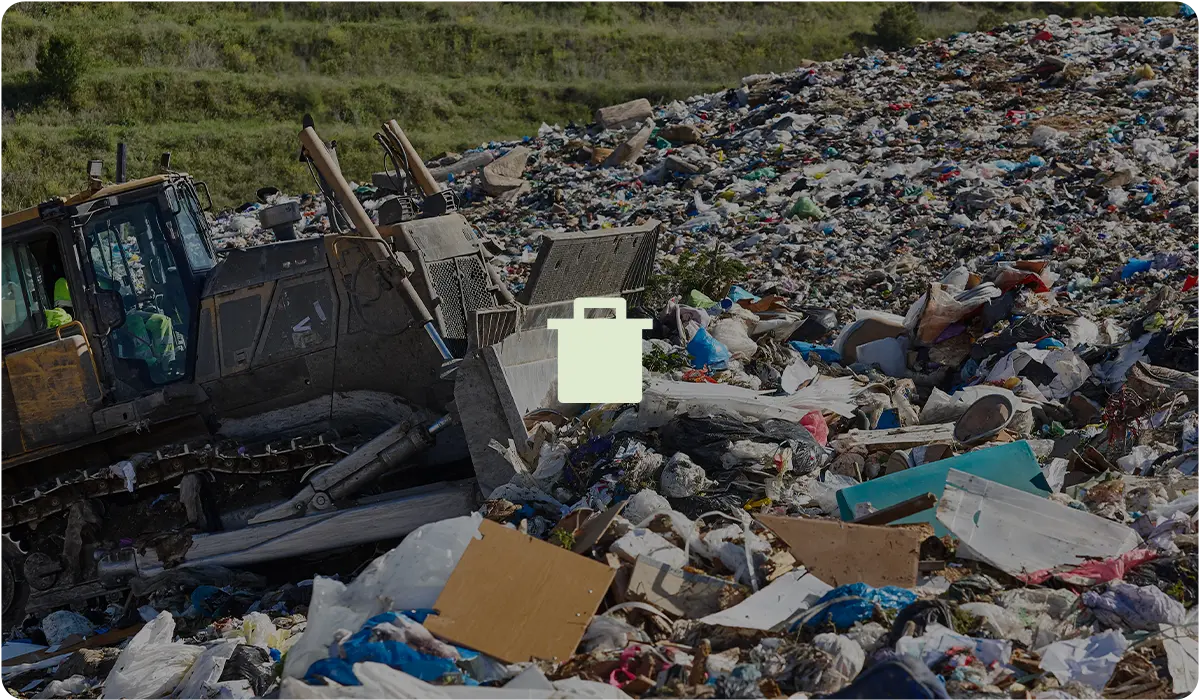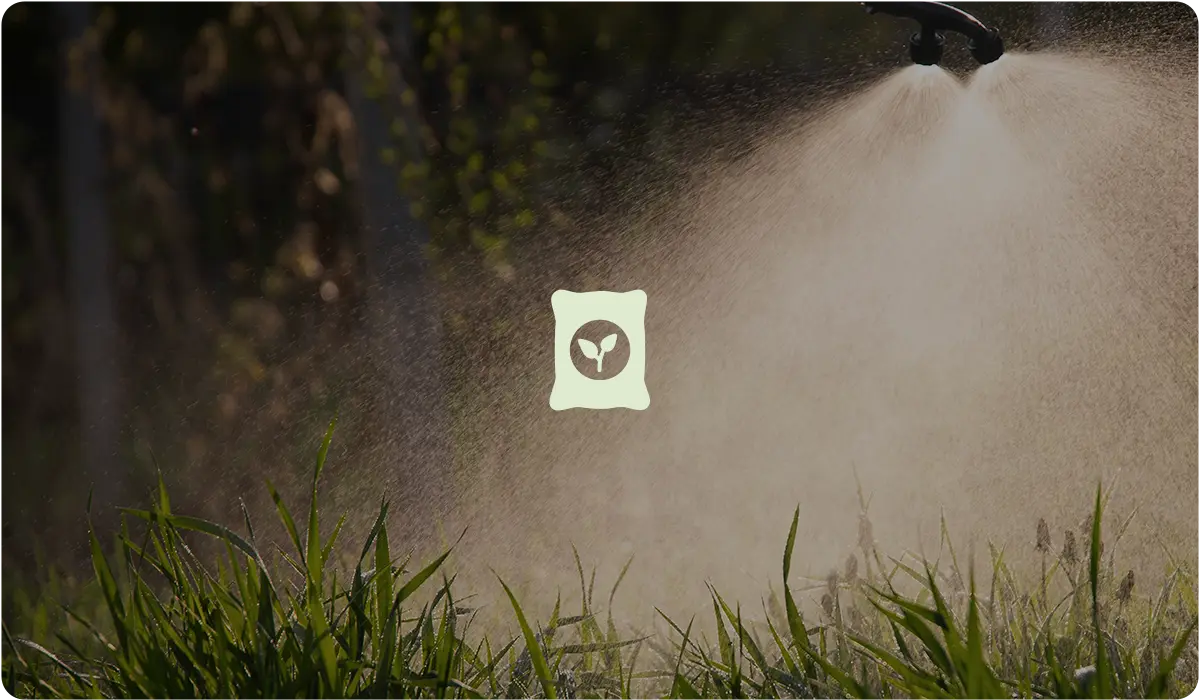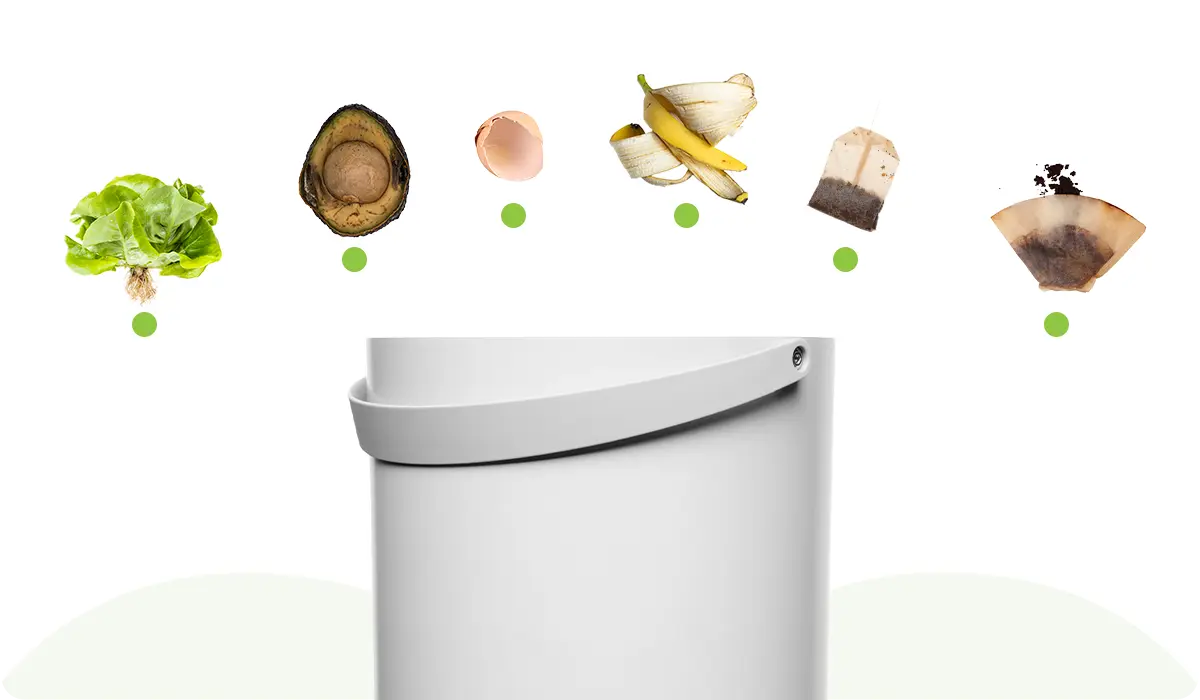Key Takeaways
Every day, households toss out scraps that still have value—banana peels, vegetable tops, leftovers. While it might not seem like much, it adds up fast. Recycling food waste at home is one of the simplest ways to reduce your environmental footprint without changing how you live or cook. And the best part? It’s easier than ever to do.
Here’s what you’ll learn in this blog:
-
How food waste recycling lowers methane emissions
-
What tools you can use to recycle food waste at home
-
What you can - and can’t - recycle
Why Is Recycling Food Waste Important?
It Reduces Landfill Waste

Food waste recycling is the process of repurposing food scraps to give them another life, helping the planet instead of sending waste to landfill.
This matters. In Canada, 46% of food is wasted every year, according to Second Harvest. And 41% of that could have been avoided with better food habits or recycling solutions. In the United States, the situation is just as staggering: nearly 40% of all food is wasted annually, amounting to about 60 million tons or $218 billion in losses.
When food ends up in landfills, it gets buried and breaks down without oxygen. This process (called anaerobic decomposition), releases methane, a greenhouse gas far more potent than carbon dioxide. In these no-oxygen environments, there are microbes that will eat away at organic matter and turn it into methane.
Landfills alone are responsible for 17% of Canada’s methane emissions, according to the national Greenhouse Gas Inventory. In the U.S., food waste makes up just 24% of landfill material but generates 58% of the methane emissions from landfills. Even with gas capture systems in place, more than 60% of that methane still escapes into the atmosphere.
It Creates Soil Amendments for Gardens & Lawns

Through food waste recycling, we can create a nutrient rich soil amendment, through a food waste recycler or through creation of a compost mixture. This soil amendment is a rich material, packed with organic matter that can be used to nourish your plants, improve their growth and health.
These amendments help plants thrive by improving soil aeration, water retention, and nutrient absorption.
To get the best out of your recycled food waste and soil, always mix your soil amendment thoroughly into the soil to make sure you’re allowing your plants to get the most nutrients out of them rather than placing it on top. This prevents mold, improves water flow, and supports strong root growth.
Reduces Chemical Fertilizer Expenses

Fertilizers and soil supplements can add up, especially if you're a regular gardener. But when you recycle food waste at home, you reduce or even eliminate those costs, while also cutting back on your waste emissions.
You also get to control what goes into your soil. More eggshells? That’s a good source of calcium, and many plants thrive off that boost, such as tomatoes and peppers. Lots of meat leftovers? That abundance of nitrogen from the protein can help leafy vegetables like kale, spinach, and lettuce.
Recycling your food waste isn’t just good for your garden, it’s a smart, sustainable choice for your wallet too.
Tools to Recycle Food Waste
Each food waste recycling method has its pros and cons. Traditional composting is great if you have outdoor space and time to maintain it, but it can be messy and attracts pests if not done right. Green bin programs help divert organic waste, but they still require hauling scraps outside. Food waste recyclers like FoodCycler offer a clean, odor-free solution that fits into any kitchen, no matter the weather or where you live. Plus, there’s no need to monitor moisture or turn piles, just press a button and you're done.
There are a few ways to recycle food waste at home:
-
Use a food waste recycler like the FoodCycler , they work by grinding, heating and dehydrating the food waste, transforming it into a nutrient-rich by-product.
-
Maintain a backyard compost pile or tumbler, where food scraps break down naturally over time - great for gardeners but requires outdoor space and upkeep.
-
Participate in your city’s green bin program (if available) to send food waste to municipal composting facilities - convenient, but dependent on local availability and rules.
What Type of Food Waste Can Be Recycled?
Think about the scraps left after making dinner: potato peels, herb stems, overripe fruit, or that wilted lettuce hiding in the back of the fridge. These are all perfect candidates for food waste recycling. Instead of tossing them, you can turn them into something useful.

Many common kitchen scraps can be recycled, such as:
-
Eggshells
-
Banana peels
-
Fruit pits (like peach, avocado or apricot)
-
Vegetable scraps (e.g. pepper tops, onion skins, fibrous peels)
-
Even coffee grounds and tea bags (without staples)
Most food waste recycling machines can take these kinds of food waste and some, like FoodCycler, can even handle larger tougher items like chicken bones and seashells. If you're composting, remember to turn the pile regularly and monitor moisture to avoid mold or rot. Proper aeration is key to a healthy compost mix.

What Type of Food Waste Can’t Be Recycled?
While traditional composting systems struggle with high-fat foods, bones, and dairy, food waste recycler machines can handle a much wider range. That said, not all machines are built equally. The FoodCycler is designed to break down most cooked and uncooked food, including small bones, making it one of the most versatile countertop solutions available.
Some foods aren’t suitable for traditional composting, especially when exposed to open air. Avoid adding meat, dairy, oily deep-fried items, or bones as they can attract pests and cause odor issues.
The grinding capabilities for food waste recyclers differ so always check the owner’s manual. Generally, avoid large bones (like steak or shanks) as they can jam or damage the internal blades.
How to Prevent Food Waste at Home

The best way to tackle food waste is to stop it at the source and adopt good habits like meal planning, buying only what you need and proper storage. But even with good habits, some waste is inevitable.
That’s where FoodCycler comes in, it works all year round - even in winter - unlike outdoor compost bins that attract pests, smell bad, and freeze in cold climates.
With a FoodCycler, you can close the loop in your kitchen, reduce emissions, and create something useful from what would otherwise be trash.
Whether you live in an apartment or a house, there's a food waste recycling solution that fits your lifestyle. If you’re looking for a simple, odor-free, and year-round option, the FoodCycler® could be the easiest first step. Ready to close the loop at home?
